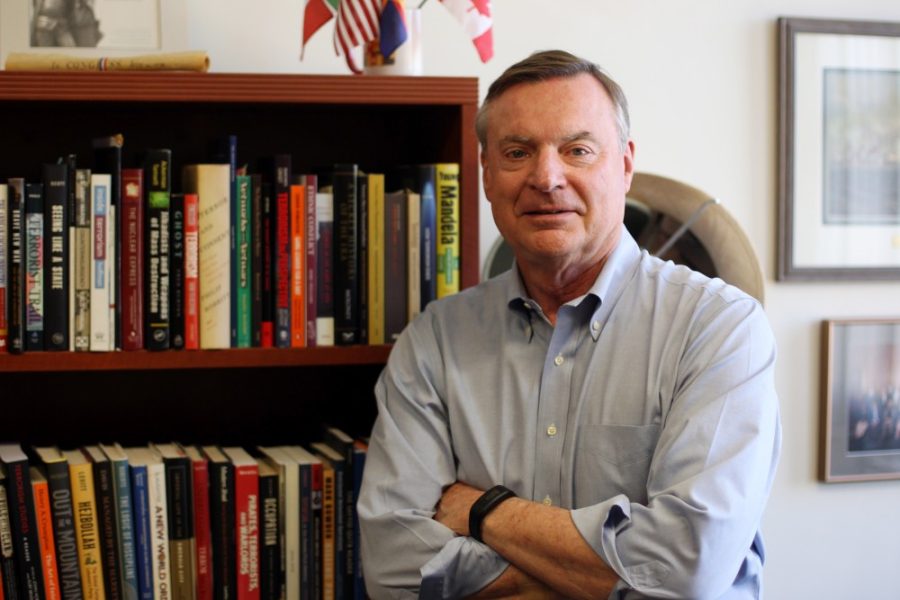Incidents like 9/11 and the recent attacks on Paris have left strong democratic nations shaken.
How terrorists coordinate large-scale attacks like these without tipping off intelligence agencies is a question that can be difficult to answer.
It is arguable that the only way to understand a terrorist is to think like one, and Dr. H. Brinton Milward, director of the UA School of Government and Public Policy, would tell you terrorists think like businessmen.
Milward has spent the past 30 years studying networks and organizations of all kinds, including health care systems and private-public partnerships.
After 9/11, he was asked to assume the mindset of Osama bin Laden, a leader on the run. Since then, his research has shifted to what he calls “dark networks.”
Dark networks are organizational networks that must operate covertly for fear of being killed or captured. According to Milward, dark networks can include drug cartels, ISIS outside the caliphate or rebel groups fighting against the government, even if for reasons Americans might deem “good.”
He has found is that dark networks face an existential trade-off. They can either act and face being discovered and wiped out, or they can lie low and risk losing the support of their community who may stop seeing them as effective.
Dark networks are typically small and not hierarchical, according to Milward.
“If you try to control everybody in a network, you’ll increase the probability that you’ll be known,” he said. “This is one of the reasons you have cellular structure to many of these networks.”
Milward pointed to the example of Pablo Escobar’s Colombian drug cartel of the 1990s. Escobar, he said, was at the center of his organization. He tried to control everything and created a system much like a wheel. Escobar was the hub and associates were the spokes. Organizations like this are easy to destroy.
Terrorists and drug cartels have since learned the power of decentralization. A system that is based on trust, Milward said.
“Trust is to networks what hierarchy is to organizations,” he said.
ISIS, however, is an interesting phenomenon in the world of dark networks.
“ISIS is only a network in some places,” Milward said. “It’s a network in Europe, but it’s an organization and it’s a hierarchy in Syria and Iraq. I mean, it’s run like a proto-state.”
Not only is ISIS running different kinds of operations, it also has a large number of fighters.
“ISIS is the largest we’ve ever seen,” Milward said, “so it is — depending on who you talk to — somewhere between 30,000 and probably 120,000 fighters. That’s very large. Al Qaeda at it’s largest was probably 1,000, maybe less.”
Milward said he believes the military when it has said, “we cannot kill and capture our way to victory,” because there is no one answer to the conflict in the Middle East.
“In Syria and Iraq right now, you’ve got ISIS. You’ve also got the civil war within what’s left of Syria that ISIS is fighting [Bashar al-] Assad, the leader of what’s left of Syria. The Russians are backing him, the Iranians are backing him and we’ve got the Iraqis who’ve had real problems fighting ISIS,” he said. “You’ve got 20 or 30 different militias. I mean, it’s just a total mess.”
Teaching people to look at terrorist organizations from a management standpoint could be part of the solution.
Milward has lectured to cadets at the United States Military Academy at West Point, New York, and to students in the Naval Postgraduate School in Monterey, California, seeking to eliminate the view that terrorist networks “are totally different than any other organizations on the face of the Earth.”
“They face the same kind of problems that any kind of network does,” Milward said. “Do you want to be big? Do you want to be small? Do you want to operate in 10 different countries or do you only want to operate in one place?”
Follow Michelle Jaquette on Twitter.









